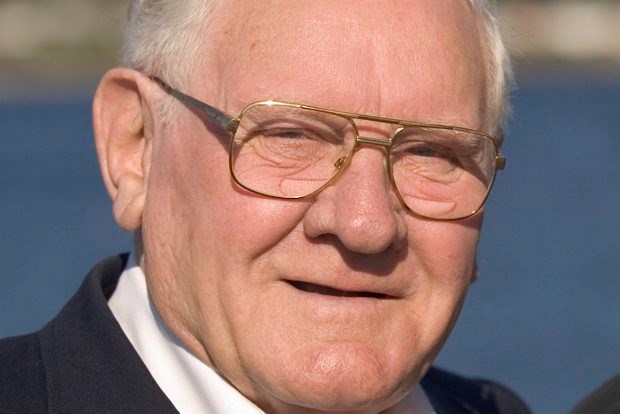If you’re planning a hike this weekend for a close-up look at Victoria’s bountiful blossoms, make sure you have strong walking shoes, a backpack with food and water — and lots of time. That’s if you want to check out every gorgeous red and white blossom setting Victoria’s streets ablaze in annual glory.
It is estimated that the city has 300 kilometres of boulevards, most of them lined with the dreams of a young man who became Victoria parks superintendent at the age of 25, and over 40 years decorated his city from boundary to boundary with ornamental trees and flower baskets. To put Herb Warren’s dream of a city annually dressed for spring and early summer into perspective, his trees and flowers, if placed in a single line, would stretch from Victoria to beyond Campbell River.
Fortunately, those who enjoy today the young man’s dreams of 80 or more years ago can taste the grandeur he planned and planted in walks tailored to age and physical ability. Unfortunately, most of today’s blossom strollers will admire, shoot countless pictures to capture the beauty but — unless they have read Janis Ringuette’s History of Beacon Hill Park — will know little about the man who made today’s spring walkabouts so wonderful.
It was not an easy task.
It was in December 1930 that William Herbert (Herb) Warren took over Victoria City Parks department. He retired 40 years later, spent some time as a consultant with Butchart Gardens and co-authored the book Trees of Greater Victoria published in 1988, four years before he died on Oct.17, 1992. The 1930s, as those of us old enough to remember can attest, were not easy years. Unemployment was rife; money was short — especially for growing flowers or trees that didn’t produce fruit for food. But Warren always seemed to find a place for beauty among what would otherwise be mundane.
In 1932, the Daily Colonist reported “nearly 50 men employed at Ross Bay [Cemetery] in work of reconditioning.” The man in charge was Warren, and 33 members of his 50-man work force were “relief workers … busily engaged in re-grading the cemetery for the purpose of re-seeding. The work is being done in such a manner that the greenswards can be mowed properly and the cemetery kept tidy in perpetuity.” During the recession between 1931 and ’37, the city paid relief workers $1.40 a day for rough labour in clearing city parks and playgrounds.
The report also provides a clue to Warren’s ability to utilize sparse cash and manpower. “Mr. Warren is also making a study of what is best to plant near the waterfront, where salt spray generally kills most plants. Sitka spruce has taken quite well there and it is planned to plant shrubs and flowers behind this windbreak. … Asters, Michaelmas daisies and other flowers have been found to withstand the salt spray … these will be planted to improve appearance. Among the trees native alder and willow seem to survive.”
If a blossom walk appeals this weekend, Moss Street will be dressed more magnificently than it is on paint-in weekend. A left turn at the waterfront will present Ross Bay and the calm shaded places where master designer Warren tested his artistry. Or you can hang a right and amble along Dallas to Beacon Hill Park where he planted his tested plants and trees. On the way, you can give a nod of respect as you cross one end of Marlborough Street where Warren used to live in heritage-registered No. 28, just a stone’s throw from what can be fairly termed the love of his life.
It wasn’t always easy protecting that love. In stature, Warren was on the short side, but what he lacked in physical dimensions he more than compensated for in clarity of vision and faith in his cause — to develop and protect city parks and recreation areas for future generations. He was tough with highway engineers who tried (and still do) to nibble at the edges of the park to widen streets or even, on one occasion, to propose a four-lane shortcut from James Bay through the park to Quadra.
He faced down dog owners who were ignoring park leash laws; refused the demands of the sporting fraternity for more playing fields. Cricket on one side, soccer on the other was all the sporting activity Herb thought necessary. The rest was for beauty and relaxation.
Don’t look for bronze tablets marking Warren’s passions and the ornamental pools, blossoms and blooms he left to mark his passing. There is only one marker on a scrubby little island on Goodacre Lake in Beacon Hill Park. It reads Warren Island.
He wouldn’t have expected more. But maybe you will, now you know how all those magnificent trees and the glories of Beacon Hill Park got to be where they are.
(Janis Ringette’s book will grace any bookshelf or can be read at beaconhillparkhistory.org.)
